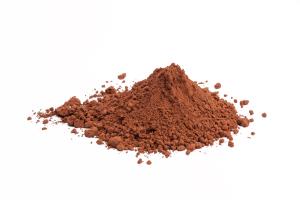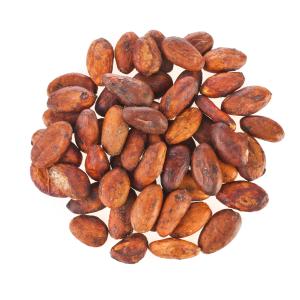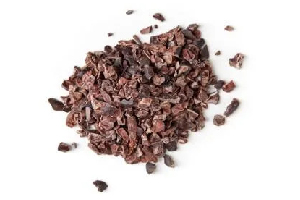Contenido del carro:
0 artículos - €0,00Mostrando todos los resultados 4
Ceremonial Cacao: A Comprehensive Overview
Ceremonial cacao, also known as ceremonial chocolate, is a unique and powerful way to connect with the ancient traditions and rituals of cacao consumption. This age-old ritual, which originated in the cultures of Central and South America, is becoming increasingly popular in the modern world. Whether you’re interested in selling cacao beans, cacao powder, cacao chunks, or cacao nibs, understanding the deeper meaning and benefits of ceremonial cacao can help you market your products more effectively.
The Origins of Ceremonial Cacao
Ceremonial cacao has its roots in the ancient civilizations of the Maya and Aztec, who used cacao in their spiritual and religious rituals. Cacao was considered a sacred drink, often referred to as the “food of the gods.” It was used to connect with the spiritual world, gain insight and wisdom, and unite communities during ritual ceremonies.
Contexto histórico
The Maya and Aztec civilizations revered cacao not only as a beverage but as a currency and a symbol of wealth and power. Cacao beans were used in trade and were so valuable that they were often given as tributes to rulers. The consumption of cacao was typically reserved for the elite and for special ceremonial occasions. The process of preparing ceremonial cacao was elaborate, involving the fermentation, drying, and grinding of cacao beans, often mixed with spices and water to create a frothy, invigorating drink.
Cultural Significance
In Maya and Aztec culture, cacao was more than just a food item; it was a sacred plant with deep spiritual significance. Ceremonies involving cacao were conducted to honor the gods, seek guidance, and celebrate life events. The bitter drink made from cacao beans was believed to open the heart, enhance meditation, and foster a deeper connection with the divine.
What Makes Cacao Ceremonial?
Ceremonial cacao is distinguished from regular cacao by the way it is grown, harvested, and processed. It is important that the cacao is produced sustainably and ethically, showing respect for the people and the environment involved in the production process. Some characteristics of ceremonial cacao include:
- Origin: Ceremonial cacao is typically grown in the rainforests of Central and South America, often by indigenous communities using ancient agricultural methods.
- Processing: The beans are minimally processed to retain their natural properties and nutrients. This means that the cacao is not roasted, but rather fermented and then dried.
- Pure Form: Ceremonial cacao is often sold in its purest form, without additives such as sugar or milk. This makes it a powerful and authentic way to consume cacao.
Ethical and Sustainable Practices
The cultivation of ceremonial cacao often involves traditional farming methods that are both sustainable and environmentally friendly. Indigenous communities typically grow cacao using agroforestry practices, which involve growing cacao trees alongside other native plants. This method not only preserves biodiversity but also ensures that the soil remains fertile and healthy.
Minimal Processing
The processing of ceremonial cacao is kept to a minimum to preserve the natural compounds found in the cacao beans. Unlike commercial chocolate, which is heavily processed and often contains additives, ceremonial cacao is fermented and dried in its natural state. This minimal processing helps to retain the cacao’s natural flavors and health benefits.
The Benefits of Ceremonial Cacao
Ceremonial cacao offers a range of health benefits, both physical and spiritual. Here are some of the key benefits:
Beneficios físicos
- Rich in Antioxidants: Cacao is one of the richest sources of antioxidants, which help fight free radicals in the body and prevent cellular damage.
- Improves Blood Circulation: The flavonoids in cacao can improve blood flow, which can contribute to better cardiovascular health.
- Enhances Mood: Cacao contains natural substances like theobromine and phenylethylamine, which can have a positive effect on mood and energy levels.
- Nutrient-Dense: Cacao is rich in essential minerals such as magnesium, iron, and zinc, which are important for various bodily functions.
Spiritual Benefits
- Connection and Intuition: Many people use ceremonial cacao to find a deeper connection with themselves and their intuition. It can help release emotional blockages and promote presence in the moment.
- Meditation and Mindfulness: Ceremonial cacao is often used during meditation and mindfulness practices to deepen and enrich the experience.
- Sense of Community: Sharing ceremonial cacao can create a sense of community and connectedness, which plays an important role in many traditional rituals.
Emotional and Mental Well-Being
The consumption of ceremonial cacao is also associated with emotional and mental well-being. The theobromine in cacao acts as a gentle stimulant, providing a natural energy boost without the jitters associated with caffeine. Additionally, the phenylethylamine in cacao can trigger the release of endorphins, often referred to as “feel-good” hormones, which can improve mood and alleviate stress.
Physical Health Benefits
The nutritional profile of ceremonial cacao is impressive. It is rich in magnesium, which is essential for muscle and nerve function, blood sugar control, and blood pressure regulation. Iron in cacao supports the formation of red blood cells, while zinc is crucial for immune function and wound healing. The antioxidants in cacao, such as flavonoids, can help reduce inflammation, lower the risk of chronic diseases, and protect against oxidative stress.
Products of Ceremonial Cacao
If you plan to sell ceremonial cacao, there are several products you can offer, each with its own unique properties and applications:
Cacao Beans
Cacao beans are the raw, unroasted seeds of the cacao tree. They can be consumed directly or used to make other cacao products. Offering high-quality, ethically sourced cacao beans can be an attractive product for consumers seeking the purest form of cacao.
Cacao Powder
Cacao powder is made by grinding cacao beans and removing the fat (cocoa butter). This powder can be used in a variety of recipes, from hot chocolate to baked goods and smoothies. It is important to offer unprocessed, raw cacao powder to maximize health benefits.
Cacao Chunks
Cacao chunks are pieces of broken cacao beans that offer an intense flavor and texture. They can be added to trail mix, baked goods, or simply eaten as a snack. Cacao chunks are a great way to experience the unique taste of ceremonial cacao.
Cacao Nibs
Cacao nibs are small pieces of ground cacao beans, which have a crunchy texture and rich chocolate flavor. They are perfect for adding to yogurt, oatmeal, or as a topping for desserts. Cacao nibs retain many of the nutrients and antioxidants of the whole cacao bean.
Cacao Paste
Cacao paste, also known as cacao liquor, is made by grinding cacao nibs into a smooth paste. This paste can be used to make chocolate, desserts, and beverages. Cacao paste is a versatile ingredient that retains the full flavor and nutritional profile of the cacao bean.
Cacao Butter
Cacao butter is the fat extracted from cacao beans. It is used in making chocolate, as well as in cosmetics and skincare products. Cacao butter is known for its moisturizing properties and is often used in lotions, creams, and balms.
How to Use Ceremonial Cacao
Ceremonial cacao can be used in various ways, from traditional ceremonies to modern culinary applications. Here are some ideas on how to incorporate ceremonial cacao into your daily life:
Traditional Cacao Ceremony
- Setting the Intention: Begin by setting an intention for your cacao ceremony. This could be anything from seeking guidance, healing, or simply connecting with your inner self.
- Preparing the Cacao: Heat water and mix it with ceremonial cacao paste or powder. You can add natural sweeteners like honey or maple syrup, and spices such as cinnamon or chili for added flavor.
- Meditation: Drink the cacao slowly, savoring each sip. Use this time to meditate, reflect, or journal. Allow the cacao to open your heart and enhance your connection with your intentions.
- Sharing: If you are in a group setting, share your experiences and intentions with others. This can create a powerful sense of community and shared purpose.
Culinary Uses
- Hot Chocolate: Make a rich, warming beverage by mixing ceremonial cacao powder with hot water or milk. Sweeten to taste with natural sweeteners.
- Smoothies: Add cacao powder or nibs to your smoothies for a nutrient boost and a delicious chocolate flavor.
- Baking: Use cacao powder or nibs in baking recipes, such as brownies, cookies, and cakes, to add depth of flavor and nutritional benefits.
- Toppings: Sprinkle cacao nibs on yogurt, oatmeal, or salads for a crunchy texture and a burst of chocolate flavor.
Wellness Practices
- Morning Ritual: Start your day with a cup of ceremonial cacao to energize your body and mind. Use this time to set positive intentions for the day ahead.
- Mindfulness Practice: Incorporate cacao into your mindfulness or meditation practice. The calming effects of cacao can enhance your ability to focus and remain present.
- Self-Care: Use cacao butter in your skincare routine. Its moisturizing properties can help nourish and hydrate your skin.
Conclusión
Ceremonial cacao is more than just a product; it is an experience and a connection to an ancient tradition. By understanding and communicating the benefits and applications of ceremonial cacao, you can offer your customers a deeper and richer experience.
Whether you sell cacao beans, cacao powder, cacao chunks, or cacao nibs, the key to success lies in sharing the authentic and powerful properties of ceremonial cacao. This will not only boost your sales but also contribute to the spread of this beautiful tradition.
Ceremonial cacao offers a unique opportunity to connect with an ancient ritual that promotes physical health, emotional well-being, and spiritual growth. By offering high-quality, ethically sourced ceremonial cacao products, you can help your customers experience the profound benefits of this sacred plant. Embrace the journey of ceremonial cacao and share its magic with the world.



